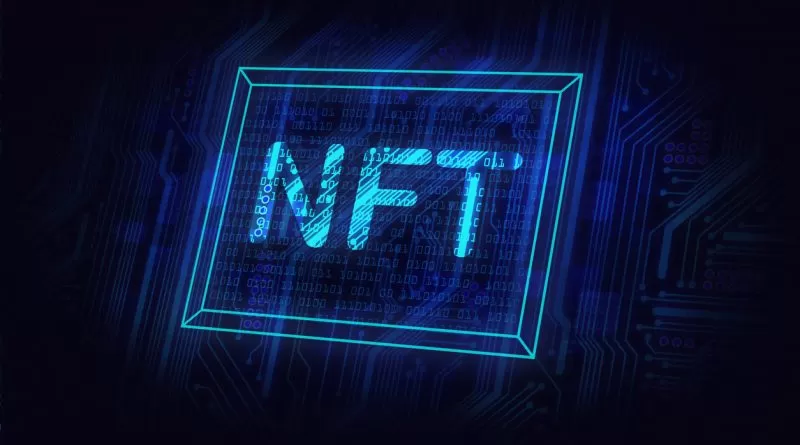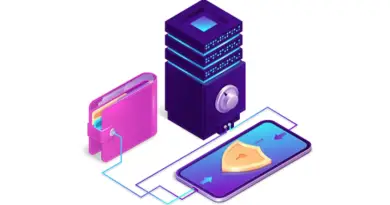NFTs Is the Key to Access and Experience the Metaverse
To put it simply, NFTs are tokens that exist on the blockchain (in most cases, the Ethereum blockchain). As a result, they can be used to establish ownership of an asset. Each NFT is assigned a unique identification code and metadata that differentiates it from other NFTs and data on the blockchain. NFTs are not replicable. Real-world, tangible assets can be bought and traded more effectively while tokenizing them reduces the possibility of fraud. NFTs, like Bitcoin and other cryptocurrencies, have ownership information for easy identification and transfer.
The metaverse, on the other hand, refers to the network of virtual and augmented reality. The Metaverse (capital “M”) is an interconnected virtual world in which anyone can participate – the next iteration of the internet. Instead of just Googling a search term, you’ll be able to join the metaverse and interact with what you’re looking for in a virtual, 3D world.
What Is the Difference Between NFTs and the Metaverse?
To put it simply, NFTs are tokens that exist on the blockchain (in most cases, the Ethereum blockchain). As a result, they can be used to establish ownership of an asset. Each NFT is assigned a unique identification code and metadata that differentiates it from other NFTs and data on the blockchain. NFTs are not replicable. Real-world, tangible assets can be bought and traded more effectively while tokenizing them reduces the possibility of fraud. NFTs, like Bitcoin and other cryptocurrencies, have ownership information for easy identification and transfer. The metaverse, on the other hand, refers to the network of virtual and augmented reality. The Metaverse (capital “M”) is an interconnected virtual world in which anyone can participate – the next iteration of the internet. Instead of just Googling a search term, you’ll be able to join the metaverse and interact with what you’re looking for in a virtual, 3D world.
The Impact of NFTs on the Metaverse
In your quest for a solution to the question “Is NFT a part of the metaverse?” you may have discovered the various ways in which NFTs can aid in the construction of the metaverse. However, it is critical to recognize the relevance of NFTs in changing the metaverse’s fundamental design. You’ve probably noticed that NFTs have the potential to disrupt the traditional social network models of user engagement, transaction, and socialization in the metaverse. So, how would these impacts play out in the metaverse? Here are some examples of how the metaverse NFT interplay might look in the future.
New Real Estate Trends
Virtual worlds imply a significant amount of virtual real estate and space. NFTs could be used to gain complete control of virtual environments in the metaverse. Users might establish ownership of the asset when building virtual real estate with the help of the blockchain. One major application of such NFT metaverse ventures is profitably selling virtual land. You can even rent out land for passive income while establishing other structures such as online stores or organizing events. Decentraland is the most well-known example of a digital real estate scenario in the metaverse. In collaboration with Adidas, Decentraland recently organized a virtual fashion exhibition. As NFT, the exhibition featured an auction of fashion designs.
As a result, there is no reason to be concerned about the possibility of future auctions for virtual locations in the metaverse. The growing popularity of virtual real estate has aroused the interest of musicians who want to preserve ownership of their work. In the future, the term “digital real estate” would refer to ownership of digital assets in general, and every NFT holder would have a place in the metaverse.
New Community, Social, and Identity Experiences
The impact of NFT metaverse initiatives would also have a considerable impact on the identification, social, and communal experiences of metaverse users. Users can express their thoughts on the virtual and real worlds by holding NFT assets. As a result, similar NFT owners may join communities to share experiences and collaborate on content development. The popular example of NFT avatars demonstrates how the metaverse NFT link is changing the world. NFT avatars are representations of the player’s true self and the one they envisage. Players could use their NFT avatars as access tokens to enter and swap between different metaverse places. NFTs can be viewed as an extension of users’ real-life identities, with total ownership, control, and flexibility for creating virtual identities.
Users might earn virtual membership to a wide range of experiences in the real world and metaverse using NFT avatars. As a result, the combination of metaverse and NFTs may improve users’ social and community experiences. The use of NFT avatars in the metaverse for startup launches and content development further demonstrates their potential.
The Path to a More Just and Transparent Economy
Individual users and businesses can now simply represent their physical assets and solutions in a digital decentralized ecosystem. Through the adoption of novel gaming models in tandem with interoperable blockchain games, the metaverse could become more accessible to real-world assets.
With new models such as the play-to-earn gaming model, the function of NFT in the metaverse would grow more prominent. It not only allows for the usage of NFTs to generate interaction in the metaverse, but it also gives gamers chances. Furthermore, play-to-earn games provide a fair gameplay experience by granting players entire ownership and control of assets.
One cannot help but observe the importance of play-to-earn gaming guilds in fostering the emergence of NFT metaverse interplay. The guilds act as middlemen, purchasing in-game NFT resources such as assets and lands. The assets and land are then lent to gamers who can utilize them to generate dividends in various virtual worlds. In exchange, the play-to-earn guilds would only receive a minor portion of the earnings. As a result, by using NFTs, you can find the ideal foundation for a fair and open economy in the metaverse.
Guilds could lessen the barrier to entry for play-to-earn games by providing a head start to players who do not have any upfront funds. As a result, you can see the prospect of a fair economy in the metaverse, in which everyone can contribute. Users could also freely sell their NFT assets, such as in-game treasures and digital real estate, on NFT marketplaces.
The fact that blockchain provides transparency and immutability plainly demonstrates the importance of NFT in the metaverse. The fair and open economy of the metaverse is strongly reliant on these traits. The underlying supply and demand rule would now govern NFT scarcity and on-chain value. As a result, there was no room for artificial value inflation. As a result, you can see how the metaverse and NFTs work together to create a transparent and equal economy, but it also gives gamers options.
A Sea of Possibilities for NFTs in the Future of Metaverse
The vast array of possibilities associated with the NFT metaverse combination would alter the trajectory of history. It is easy to understand how NFTs provide ownership and uniqueness, whereas the metaverse provides a digital universe in which everything is possible. The merger of the digital world and a way to represent real and digital assets in the world would have a significant impact on the economic and social experiences. While many individuals believe that NFTs are a part of the metaverse, some feel that they are not. NFTs are the building blocks of the metaverse, it is clear that NFTs and the metaverse would open up a wide range of possibilities.




